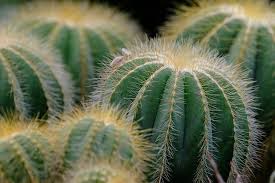Nature Imagery and Harmony in Chinese Poetry: An Exploration of Timeless Themes

Chinese poetry, one of the world’s oldest and most influential literary traditions, has long been celebrated for its deep connection with nature and its exploration of the harmony between humanity and the natural world. From the works of early dynastic poets to the classic poems of the Tang and Song dynasties, nature has been a central theme, often serving as a mirror for human emotions, philosophical reflections, and spiritual insights. In this article, we will explore the role of nature imagery in Chinese poetry and how it has symbolized harmony, balance, and the intrinsic connection between humans and the environment.
The Cultural Context of Nature in Chinese Poetry
Nature has held a prominent place in Chinese philosophy and culture for centuries. Central to traditional Chinese thought is the concept of harmony—harmony between humans and nature, between the elements, and between the individual and the cosmos. This principle is rooted in several key philosophies, including Confucianism, Taoism, and Buddhism, all of which have significantly shaped Chinese poetry.
In Taoism, nature is seen as a reflection of the Tao (the Way), a natural force that governs the universe. The Taoist ideal of “wu wei” (non-action or effortless action) suggests that humans should live in accordance with the natural flow of the world, avoiding unnecessary interference. In Confucianism, nature is often used as a metaphor for moral cultivation and personal virtue, emphasizing the importance of balance and respect for the natural world. Buddhist thought similarly highlights the impermanence and interconnectedness of all things, which is reflected in the fleeting beauty of nature depicted in Chinese poetry.
As a result of these philosophical underpinnings, nature in Chinese poetry is not just an external world to be observed but a deeply interwoven element of human existence. Nature imagery is used not only to evoke the beauty of the natural world but also to explore themes of impermanence, spiritual awakening, and the transient nature of life.
The Role of Nature Imagery in Early Chinese Poetry
The earliest Chinese poetry, known as the Shijing (Classic of Poetry or Book of Songs), dates back to the Zhou Dynasty (1046–256 BCE). This collection of over 300 poems is one of the oldest surviving works of Chinese literature and includes poems that reflect a deep connection with the natural environment.
In the Shijing, nature is often used to express emotions and human experiences. The poems reflect the rhythms of the seasons, the beauty of the landscape, and the relationship between nature and society. The imagery in these early works is frequently simple and direct, depicting nature as both a source of inspiration and a reflection of the poet’s inner state. For example, in one of the poems, the image of the “red phoenix” rising over the mountains can symbolize a sense of hope or the arrival of a new season. Similarly, the natural world is portrayed as a backdrop to human emotions, such as longing, sorrow, or joy.
One notable feature of the Shijing is its use of nature to communicate social and political messages. The poets often use images of natural elements like rivers, mountains, and fields to reflect the ideal state of the nation and the harmonious relationship between the ruler and the people. The natural landscape becomes a metaphor for the stability and prosperity that should exist within the human realm.
Nature Imagery in Tang Poetry: The Golden Age of Chinese Literature
The Tang Dynasty (618–907 CE) is often considered the golden age of Chinese poetry, marked by an outpouring of poetic creativity and innovation. During this period, nature imagery in poetry reached new heights of sophistication and depth. Poets like Li Bai, Du Fu, Wang Wei, and Bai Juyi brought nature to the forefront of their works, using it as both a medium for personal expression and a vehicle for philosophical reflection.
Li Bai, often referred to as the “Immortal Poet,” is famous for his exuberant and romantic portrayal of nature. His poems are filled with vivid depictions of the natural world, which serve as symbols for the poet’s own sense of freedom, transcendence, and detachment from the worldly concerns of politics and society. In one of his most famous works, Drinking Alone by Moonlight, Li Bai captures the beauty of the moon and the solitude of nature, using the moon as a metaphor for the poet’s sense of spiritual isolation and longing:
“A cup of wine, under the flowering trees,
I drink alone, no friend with me.
I raise my cup to invite the moon,
And ask her to join me in my solitude.”
Here, nature is not simply a passive backdrop but an active participant in the poet’s emotional state. The moon, an image of purity and distance, reflects the poet’s longing for a sense of transcendence and oneness with the universe.
Du Fu, a contemporary of Li Bai, approached nature from a more grounded and reflective perspective. While Li Bai’s poems often celebrate the beauty of nature and the freedom it represents, Du Fu’s poetry reflects a more somber tone, focusing on the hardships of life and the social turmoil of his time. However, nature still plays a crucial role in his works, often serving as a symbol of the fleeting nature of human life and the impermanence of worldly affairs.
In Spring View, Du Fu uses the imagery of the changing seasons to convey the sorrow and disillusionment he feels due to the turmoil in China during his time:
“The country is broken, though the mountains and rivers remain,
In the city, spring is still green and the flowers bloom.”
Here, nature’s constant cycles serve as a poignant reminder of the transience of human existence. The imagery of flowers blooming in spring contrasts with the poet’s grief over the fall of the dynasty, suggesting that while human affairs are temporary, nature endures beyond the vicissitudes of time.
Wang Wei, another famous Tang poet, is renowned for his mastery of nature imagery and his ability to convey a deep sense of peace and harmony in his poems. A Buddhist by inclination, Wang Wei often used nature to reflect the Taoist and Buddhist ideals of simplicity, detachment, and harmony with the universe. In one of his poems, he describes the landscape of a mountain retreat:
“A white sun sets behind the mountain,
The river flows quietly to the sea.
The birds return to their nests,
And the world rests in peaceful harmony.”
Wang Wei’s imagery of the sun setting, the river flowing, and the birds returning to their nests evokes a sense of tranquility and balance, reflecting the Taoist belief in living in harmony with the natural flow of life.
The Song Dynasty and Nature’s Symbolism in Landscape Painting and Poetry
The Song Dynasty (960–1279 CE) saw the flourishing of both poetry and painting, with nature continuing to serve as a central theme in the works of poets like Su Shi and Li Qingzhao. The Song poets often wrote about the beauty of the landscape, the changing seasons, and the fleeting nature of life, reflecting the influence of both Confucian and Taoist thought.
Su Shi, a famous poet and statesman, used nature imagery to convey both personal feelings and broader philosophical ideas. In his poem Viewing the Moon at the River’s Edge, Su Shi reflects on the moon, which has long been a symbol of constancy and change:
“The moon at midnight,
Like a mirror, shines on the river’s surface.
I watch the waves,
And feel the passage of time.”
The moon in this poem, as in many others, symbolizes the passage of time and the cyclic nature of existence. Su Shi’s reflection on the moon’s beauty evokes a sense of melancholy, but also a deeper acceptance of life’s inevitable changes.
Li Qingzhao, a female poet of the Song Dynasty, often used nature imagery to convey her personal emotions, particularly feelings of loss and longing. Her poems about the changing seasons and the impermanence of life are filled with references to flowers, the moon, and other natural elements, often using them to explore themes of separation and the passage of time.
Harmony Between Humans and Nature in Chinese Poetry
Throughout Chinese poetry, nature is not merely a subject for aesthetic admiration; it also reflects the harmony between humanity and the natural world. The ideal of harmony, deeply embedded in Confucian, Taoist, and Buddhist philosophy, emphasizes the interdependence of all things. In Chinese poetry, the image of nature often serves as a reminder that humans are part of the larger universe, and they must live in accordance with its rhythms and cycles.
This harmonious relationship is best seen in the use of nature as a means of introspection and spiritual growth. Poets often use images of rivers, mountains, forests, and the sky to symbolize the poet’s inner journey toward understanding and enlightenment. By reflecting on nature, the poet comes closer to understanding their place in the world and their connection to the larger cosmic order.
Conclusion: The Enduring Power of Nature in Chinese Poetry
The rich and diverse tradition of Chinese poetry demonstrates the profound role nature has played in shaping the culture and philosophy of China. From the earliest works of the Shijing to the masterpieces of the Tang and Song dynasties, nature imagery has remained a central theme, symbolizing everything from personal emotions to philosophical reflections on the impermanence of life and the balance of the universe.
In Chinese poetry, nature is not just a backdrop for human life but a mirror of human experiences and emotions. It is both a source of beauty and a symbol of deeper truths, offering poets a way to express their connection to the world around them. Through these timeless works, nature continues to inspire readers and poets alike, reminding us of the enduring harmony that exists between humans and the natural world.

